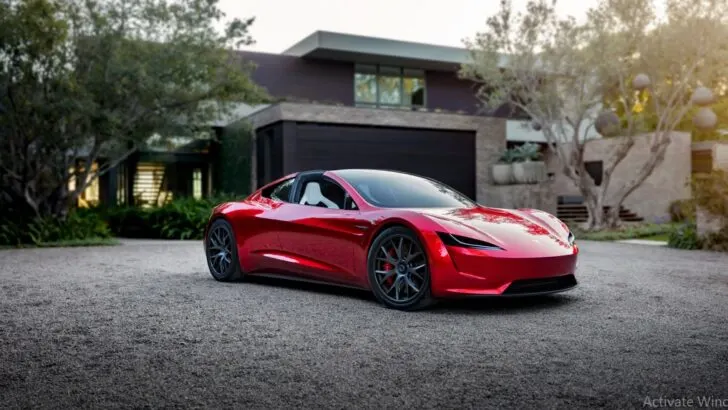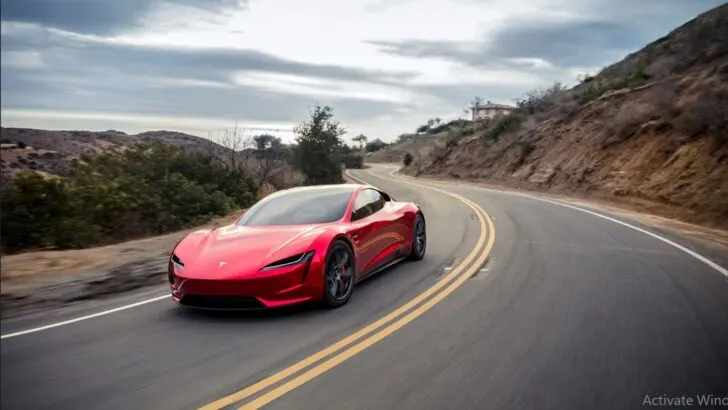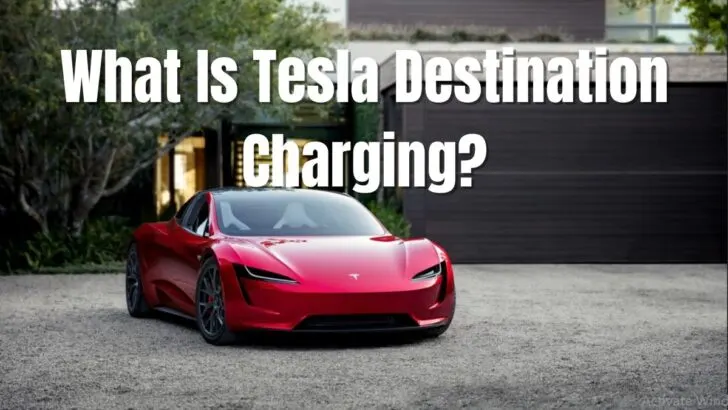Tesla is the world’s leading electric vehicle (EV) manufacturer, and it shows no signs of slowing down. Its range of EVs includes the Model 3, Model X, Model S, and Model Y.
And their cars’ excellent driving range, acceleration, and luxury features are common across the board.
However, like any automobile on our roads, a primary concern is its EVs driving range and the speed of chargers. And you may have heard about the Tesla Destination Chargers and wondered what they are.
Unlike the Tesla Supercharger, the Destination Charger is slower and generally similar-rated the ones you can buy from a shop to install in your garage.
However, are they fast enough? Are they free? How do they compare to the Superchargers?
We have answers to these questions and more in today’s article.
Tesla Destination Charger Explained
These Tesla Destination Chargers offer slow charging benefits to your battery pack as it degrades the cells less than fast and high-intensity Superchargers.
Also, Destination Chargers are generally free to use for Tesla drivers and are a property of the restaurant, parking garage, hotel, etc.
In some locations, they’re free for public use as long as you have an appropriate adapter, while others mark them as “For Customers Use Only.” So, technically, they’re free to use, provided you spend money with the business.
Some towns are also smart with their Destination Chargers by installing some free ones in their downtowns to attract traffic away from the freeway. Consequently, drivers charging within the town promote the local businesses.
How Long Does It Take to Charge a Tesla at a Destination Charger?
Tesla Destination Chargers are slower than the Superchargers and will take anywhere between one and 12 hours to charge your car’s battery pack fully.
The charging duration depends mainly on your Tesla’s battery capacity and the charge remaining within the batteries.
Due to its relatively slower charging speed, Destination Chargers work best for individuals who want to spend a night or some time at a place.
Such locations include restaurants, hotels, and parking garages where one would spend some 20 to 30 minutes or even longer.
However, a 30-minute stopover at a destination charger will add you 15 miles of charge or more, depending on the model.
Let’s look at Tesla Destination charger rates per model.
Model 3: Expect 44 miles of range with one hour of charge.
Model 3 Standard: You’ll get an additional 30 miles range with one hour of charge.
Model S: Here, a one-hour charge gives your car an extra 34 miles of range.
Model X: A one-hour charge gives you 30 miles of range.
Model Y: The Model Y comes second to Model 3 in terms of range. Here, a one-hour charge at a Destination Charger adds 42 miles of range.

How Much Does It Cost to Charge a Tesla at a Destination Charger?
It depends, but mostly free.
Most people know that one has to pay approximately $0.28 per KWh to charge their vehicles at a Tesla Supercharger.
They’re fast and secure and connect your car to Tesla servers from where the company can monitor the health of its vehicles, review the data, and provide over-the-air updates when necessary.
But what about Destination Chargers?
Until recently, charging at a Destination Charger was free, and up to the host to cover the charging fee. In other words, having Destination Chargers is one way of attracting Tesla drivers as clients to certain businesses.
Therefore, a Tesla owner on their drive upcountry would prefer to stay at a hotel that has one over another that lacks.
And what’s even better about the charging system is that you’ll not incur any parking or idle costs while powering your car in most places. However, this depends on the business premise you’re in, as Tesla doesn’t regulate such prices.
Recently, Tesla scrapped free destination charging in favor of paid charging in hotels, restaurants, and other businesses.
The move is a promise come true for many businesses, as company CEO Elon Musk announced plans to do so after rolling out the Gen3 Wall Connectors in 2020.
However, to set pricing at a Destination Charger location, the host facility must have a minimum of six Tesla Wall Connectors.
Here’s an excerpt from Tesla’s statement on Commercial Registration terms for Wall Connectors.
“Tesla Commercial Services can be enabled on Gen3 Tesla Wall Connectors that are connected to either Wi-Fi or Cellular and have a signed Services Agreement with Tesla. A minimum of six units are required to be installed to be considered for this service.”
The terms exclude a vast majority of operators since most locations have two to four Wall Connectors.
What Is the Difference Between a Tesla Supercharger and a Destination Charger?
Charge Speed
The first noticeable difference between the two is their charging speeds. A SuperCharger is an extremely fast and state-of-the-art Tesla DC charging system that adds approximately 75 miles of range in 5 minutes or 200 miles in 15 minutes.
On the other hand, Destination Chargers are slower and give you 30 to 42 miles of range with an hour of charge. Looking closer, a 5-minute charge range with a SuperCharger exceeds an hourly range with a Destination Charger.
On the brighter side, Destination Charger’s slow charging preserves the battery longer.
Site Location
Another difference between the two innovative charging technologies is their locations.
Destination chargers are way too slow to be placed at stations, as this would cause traffic pile-ups. Imagine waiting 12 hours to get a free slot to charge your car at a station.
As such, you’ll only find Destination Chargers at restaurants, hotels, and other notable facilities.
On the other hand, you’ll find Superchargers across the nation by the roadside or close to major intersections. They work like gas stations to ensure that you’re back on the road in the soonest time possible.
Fee Structure
Currently, Tesla is rolling out a program to allow a host business, such as a hotel, to charge a fee on their Destination Charger stations. But as of now, most are still free to use across the United States.
On the other hand, Tesla gives you 400 kWh of yearly charge credit to use at a Supercharger. This equates to 1,000 miles of annual driving range. Afterward, you’ll have to pay for your charging when you deplete the credit.
Currently, the average cost to charge a Tesla ranges between $14 and $17, depending on:
- The battery rating
- Cost of electricity
- Average daily driving distance
- Charge efficiency
Can Any Car Use a Tesla Destination Charger?
If you’ve been in a hotel with Tesla Destination Chargers, you’ll realize that the stations are sometimes non-occupied.
And if the Destination Chargers are a property of the hotel, then why shouldn’t it accommodate non-Tesla electric vehicles? The answer is they do.
Tesla Destination Chargers allow charging for non-Tesla EV brands on the condition that you have an adaptor. Also, Tesla usually installs Type 2 charge points for general EV use, but you’ll only access them if your car has a Type 2 inlet.
But isn’t it illegal to use an adapter?
Not really. Tesla plans on rolling out Destination Chargers and Superchargers with wider electric vehicle compatibility.
Second, the publicly accessible Destination Chargers are owned by the business and installed with free Tesla hardware. As such, they’re not bound to lock out any EV with a Tesla charging compatibility.

The Takeaway on Tesla Destination Chargers
Tesla Destination Chargers are an excellent option for boosting your car’s battery while sipping a cup of hot coffee in cold winter.
They’re free to use, provide stable charging, and you won’t incur any idle fees like you would with a Supercharger.
However, they’re painfully slow, and you should be able to differentiate a Supercharger from a Destination Charger.
It’s really disappointing being in a hurry, locating a Tesla charging station, plug in the power chord, to realize that you need 6 hours for a full charge.
Luckily, we’ve gone through events when either Tesla charging station suits you.
